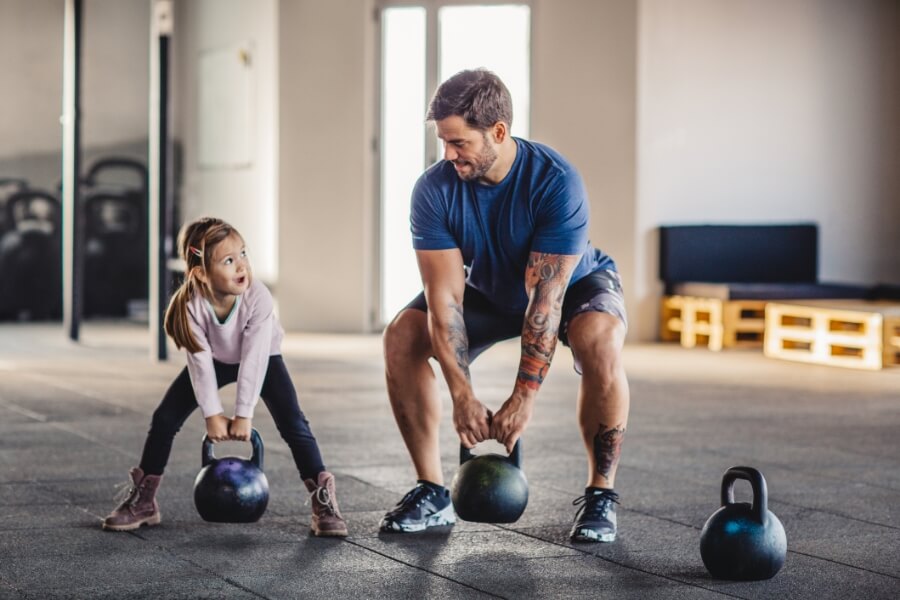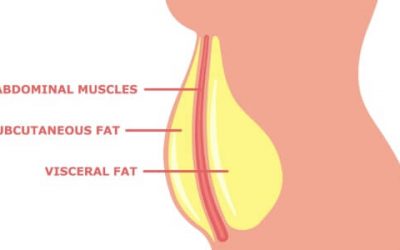
The Kettlebell swing is one of the most popular exercises ever. It is also one of the most misunderstood. It works 80% of your muscles. The most important, and most basic element of this exercise, the movement pattern itself, is often completely overlooked.
So, let’s look at exactly that; the movement pattern of the Kettlebell swing.
When done correctly, it should be a movement known as a “hip hinge”, which is a way of describing bending forward at the hips with your back flat and your knees slightly bent. This is a Hip Dominant movement pattern, which means that the majority of the movement is occurring at the hips (not the knees). The Kettlebell is swung backward between the legs, creating huge tension at the hips and hamstrings. The weight is then swung forward, to shoulder height, by violently extending (“punching”) the hips forward until the trainee is standing completely upright with the Kettlebell at arms length.
The hip hinge is one of a small group of fundamental movement patterns that combine to form a good gym programme. Other patterns in this group include squatting, pushing/pulling, rotating and stepping/lunging. Each of these movements is essential to a well-rounded training plan but for now, let’s examine the Hip Hinge in more detail.
The Hip Hinge is the ultimate “functional” movement. It utilises what is arguably the strongest muscle of the body, the glutes, as well as the hamstrings, lower/mid/upper back and the abdominal muscles. The extension (the forward part of the swing) is an excellent way of training your body to express force quickly; in other words, power!
The hinge begins when the torso folds forward at the hips. The knees should be slightly bent, but only a little. The back should be flat, and if it is done correctly, the trainee will usually feel a stretching of the hamstrings (the muscles on the back of the thighs). In the Kettlebell swing, the hinge action happens as the Kettlebell swing backwards between the legs.
Notice I said backwards, not downwards…
The biggest mistake people make with the Kettlebell swing is squatting the weight down then and just standing up with it. A squat will load the quadriceps muscles on the front of the thighs but you will then be in completely the wrong position to extend the hips and swing the Kettlebell back up. What usually happens is that people use their upper body to awkwardly lift the Kettlebell to shoulder height, thereby missing out on almost all the potential benefit of this fantastic movement.
As you swing the Kettlebell back between your legs, your torso should hinge forward, like this:
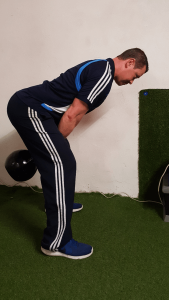
(FIGURE A) Correct
If you simply squat down like below, your torso will remain quite upright and your hamstrings will have very little tension on them. You will be unable to efficiently “punch” the Kettlebell forward with your hips and will have to use your shoulders to raise the weight, like a bad Front Raise!
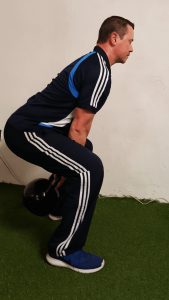
(FIGURE B) Incorrect
The weight is then swung forward by quickly extending the hips (in other words standing up) and aggressively driving forward to a position that should resemble a push up, but standing! See below:
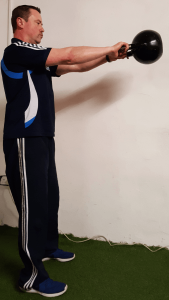
(FIGURE C)
The glutes should be squeezed and the lower back should not be overextended (looking up at the ceiling). Your abdominal muscles at the front of your body will be working hard to arrest the momentum of the Kettlebell. Ideally, it should feel weightless as it reaches the top of the movement, usually around shoulder height.
The movement is then repeated by beginning another hip hinge and swinging the weight back through the legs again.
This is not intended to be an exhaustive analysis of the swing (the debate on optimal head position alone could fill a book!) but hopefully this will help with avoiding the most common errors and getting the most out of one of my favourite exercises ever!
